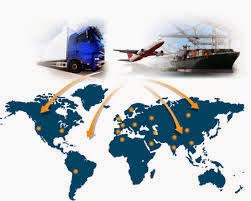A través de este interesante articulo hemos podido apreciar las necesidades, problemas y soluciones para mejorar la cadena de suministro en un área metropolitana con un gran numero de habitantes, en este caso México.
Se nos plantean ocho estrategias para reducir tiempos y costes en inventarios; estrategias de marketing para conseguir que las necesidades del cliente sean, también, las de la empresa; mejoras informáticas en la preparación y control de pedidos, instalación de nuevas tecnologías para vehículos; logística inversa para residuos y reciclaje y externalización del transporte para facilitar la entrega al cliente.
Todo ello ejemplarizado con el nombre de grandes empresas multinacionales.
En resumen, una interesante visión de la capacidad de la logística para adaptarse a grandes retos y constantes cambios.
martes, 24 de marzo de 2015
Definitions II.
Logistics
From Wikipedia, the free encyclopedia
Logistics is the management of the flow of goods between the point of origin and the point of consumption in order to meet some requirements, of customers or corporations. The resources managed in logistics can include physical items, such as food, materials, animals, equipment and liquids, as well as abstract items, such as time, information, particles, and energy. The logistics of physical items usually involves the integration of information flow, material handling, production,packaging, inventory, transportation, warehousing, and often security. The complexity of logistics can be modeled, analyzed, visualized, and optimized by dedicatedsimulation software. The minimization of the use of resources is a common motivation in logistics for import and export.
Supply chain
From Wikipedia, the free encyclopedia
A supply chain is a system of organizations, people, activities, information, and resources involved in moving a product or service from supplier to customer. Supply chain activities transform natural resources, raw materials, and components into a finished product that is delivered to the end customer. In sophisticated supply chainsystems, used products may re-enter the supply chain at any point where residual value is recyclable. Supply chains link value chains.[2]
Definitions.
Supply chain management
From Wikipedia, the free encyclopedia
For the journal, see Supply Chain Management (journal).
|

Supply chain management managing complex and dynamic supply and demand networks.[1] (cf. Wieland/Wallenburg, 2011)
Supply Chain Management (SCM) is the management of the flow of goods and services. It includes the movement and storage of raw materials, work-in-process inventory, and finished goods from point of origin to point of consumption. Interconnected or interlinked networks, channels and node businesses are involved in the provision of products and services required by end customers in a supply chain.[2] Supply chain management has been defined as the "design, planning, execution, control, and monitoring of supply chain activities with the objective of creating net value, building a competitive infrastructure, leveraging worldwide logistics, synchronizing supply with demand and measuring performance globally."[3]
SCM draws heavily from the areas of operations management, logistics, procurement, andinformation technology, and strives for an integrated approach.[4]
Suscribirse a:
Comentarios (Atom)


